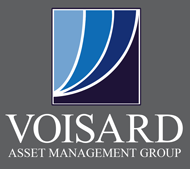Asset allocation is the cornerstone of long-term investment success. It’s the strategic mix of different investment types, such as stocks, bonds, cash, and alternatives, within your portfolio. This mix directly impacts your portfolio’s risk and potential return.
While there are common approaches like the “100 minus age” rule, finding the optimal asset allocation for your unique situation requires careful consideration. Let’s explore the key factors that should be assessed when determining your asset allocation.
Financial Goals
Understanding your financial goals is paramount. Are you saving for retirement, a down payment, or your child’s education? Having a conversation surrounding financial goals, both short and long-term, allows you to create a roadmap of how you will use your savings in the future. Goal-based investment planning means your savings are growing for specific purposes and supporting future causes. Clearly defined goals are the first step in building an asset allocation decision.
Time Horizon
Time horizon goes hand in hand with financial goals. It is simply when you need funds from your portfolio rather than how you use them. For example, if you want to fully fund a 529 plan for your 5-year-old son and expect him to attend college at age 18, your time horizon is 13 years. Regarding retirement planning, a person in their 30s has a much longer time horizon until portfolio utilization than someone in their 60s. A longer time horizon allows the portfolio to recover from market drawdowns and benefit from the power of compounding, especially without the burden of withdrawals during challenging periods. Understanding your time horizon can help determine your allocation mix.
Risk Tolerance
Risk tolerance is another crucial component of determining asset allocation. This is often defined as your comfort level with market volatility. Since 1950, a 60% equity/40% fixed income portfolio has returned approximately 9% annually, but every year can look drastically different based on the current market and economic conditions. For example, in 2022, an average 60/40 portfolio declined -16%; in 2023, the same portfolio returned +18%. Market drawdowns are uncomfortable, which is why it’s important to understand if you can emotionally withstand a year like 2022 to benefit from a recovery like 2023. Every investor wants exceptional investment returns. However, the higher the expected return in the long term, the higher the expected risk in the short term. Understanding your risk tolerance is an important step in determining the right mix between higher risk and return assets, like stocks, and lower risk and return assets, like bonds and cash equivalents.
Risk Ability
Lastly, your risk ability is influenced by your financial situation, lifestyle, and dependencies. For example, someone with a long-time horizon and a stable income may have a higher risk ability than someone nearing retirement with limited savings. Assessing your risk ability helps determine the appropriate level of risk you can comfortably take on. It is important to note that even if you have a high-risk tolerance, your ability to take on risk may be limited by your time horizon or current needs. On the flip side, someone with a high-risk ability may be perfectly comfortable taking on less risk because taking on more risk is not necessary to achieve their goals.
Summary
Determining asset allocation is a multifaceted process that requires a comprehensive understanding of your goals, time horizon, risk tolerance, and risk ability. By carefully considering these factors, you can create an investment strategy that aligns with your unique circumstances and helps you achieve your financial objectives.
Over time, all these different components will change. At least annually, it’s important to review progress on your goals, determine if your emotional tolerance towards risk has changed, update your time horizon, and reevaluate your ability to take on investment risk. While the headlines in the newspaper should not dictate your optimal target asset allocation, the headlines in your life certainly will (e.g., loss of a job, death of a spouse, birth of a child, change in health, and so on). At Voisard Asset Management Group, we enjoy facilitating these conversations and ensuring our clients’ asset allocations are customized to them. If you have questions about your current asset allocation, don’t hesitate to contact our team



